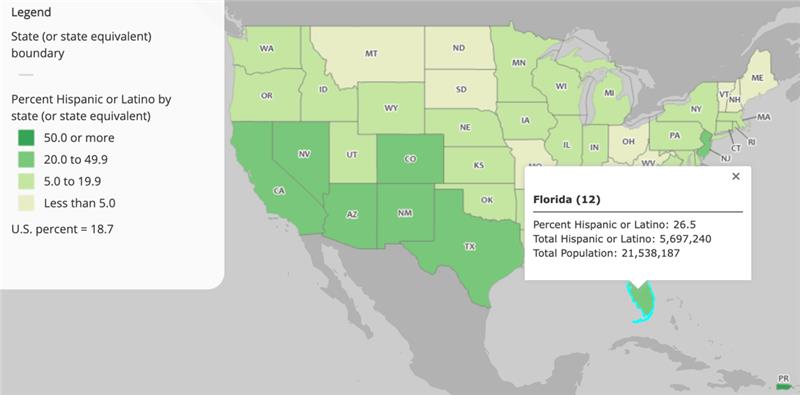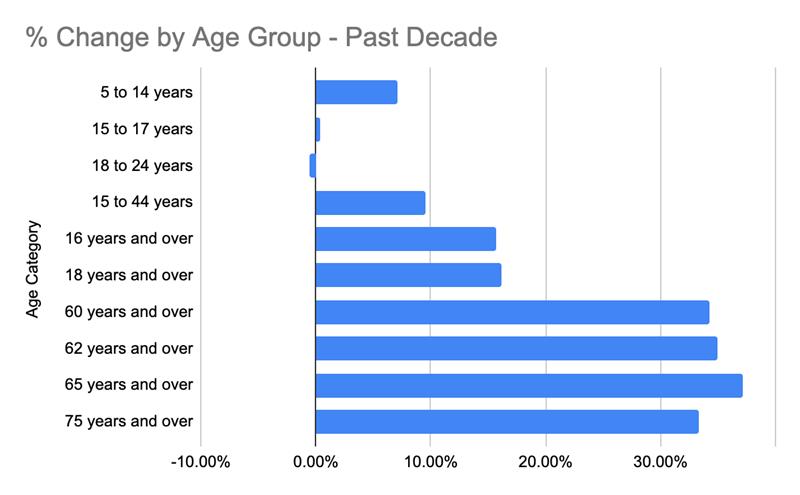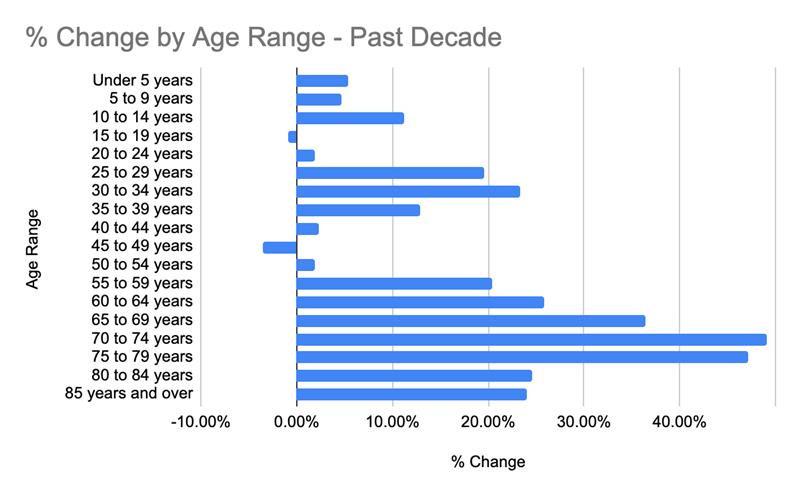Blog
Blog

Use This New Data to Adjust Your Marketing Plans
Florida’s Census Data Reveals an Older, More Multiracial Population
Every 10 years, the United States delivers us a goldmine of data: the latest Census. It’s an opportune time to gauge demographic fluctuations of not only shifting population totals but also ages, ethnicities, genders, races and more. We can leverage the new data to ensure your marketing strategies are still aligned with the audiences you wish to target.
Let’s take a look at Florida as an example of one of the fastest-growing states in both population and diversity. Here are some insights we’ve gleaned:
No surprise, but Florida is still growing.
In the past decade, Florida’s population has grown by 14.6% and now stands at 21,538,187. Florida is now the third-largest state behind California and Texas.
The Hispanic ethnicity is expanding.
More than a quarter of Florida’s residents are Hispanic, putting Florida in a tier with seven other states (all located in the Southwest, with the exception of New Jersey). Florida’s largest Hispanic population, by percentages, are in Miami-Dade, Hendry, Osceola, Hardee and Orange counties. The five counties with the fastest-growing populations are in greater Jacksonville (St. John’s, Nassau and Baker) and Florida’s panhandle (Walton and Okaloosa).

More people are identifying as multiracial.
While Florida’s “Black/African American alone” population has grown to 15.1% of the total population, of particular significance is the segment that self-identifies as multiracial. This category saw the most dramatic spike across the state and shows the trend of an ever-growing racial spectrum.
To be specific: In 2010, 9 million people in the U.S. identified as multiracial. That number is up 276% to 33.8 million people in 2020. Furthermore, Florida’s “White alone” population decreased by 12% (or by 1,686,201 people), and its “Two or more races” population increased 651.6% (or by 3,079,495 people).
As Florida’s population has expanded, it has gotten much older.
There were huge increases in 55+ age groups. The fastest-growing U.S. metro area between the 2010 Census and 2020 Census was The Villages, which grew 39% from about 93,000 people to about 130,000 people. The percentage of Floridians ages 70 to 74 grew a whopping 49 percent, from 772,576 in 2010 to 1,151,686 nearly a decade later.


So how should all this data change the way you do business?
Multicultural populations require unique approaches that consider the nuances of culture and heritage. Each wants to connect with brands and issues relevant to them and their communities, and for it to be done authentically. People want to know that they are not an afterthought and that an organization is committed to building meaningful interactions with them over time – one time outreach simply does not make the cut anymore.
At Moore, we know how to apply our multicultural expertise to diverse populations in the U.S. ensuring connections in culturally sensitive and authentic voices. Brands like Ford Motor Company, PhRMA and Avon have trusted us to help them build credibility among multicultural audiences through thoughtful engagement and relationships and it has made a difference in how each is perceived.
As one of the largest independently owned integrated communication firms specializing in multicultural marketing, we know that driving the right results has never been more important. Let’s chat.

